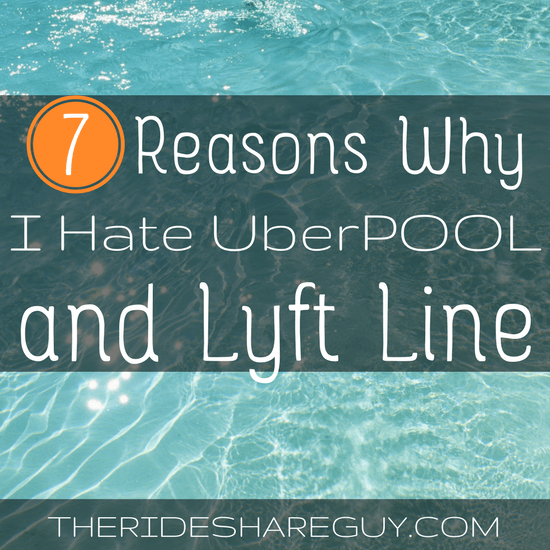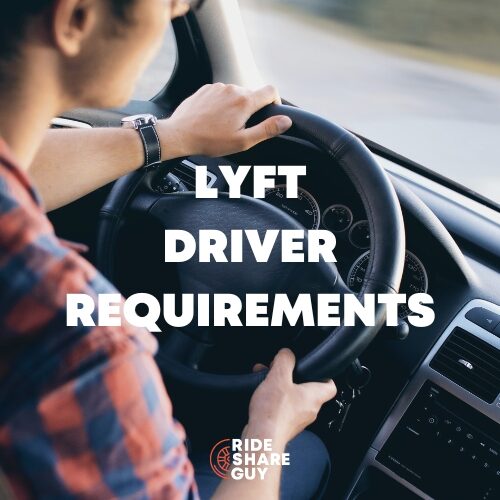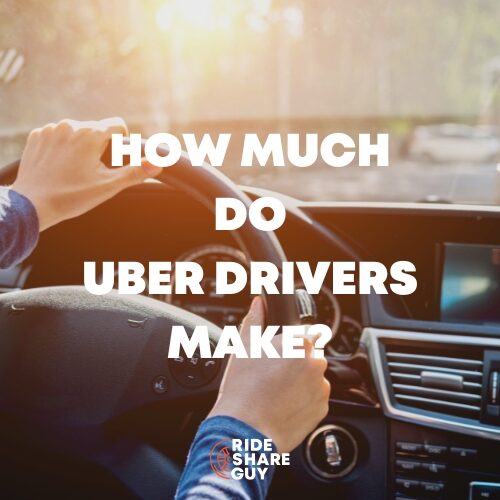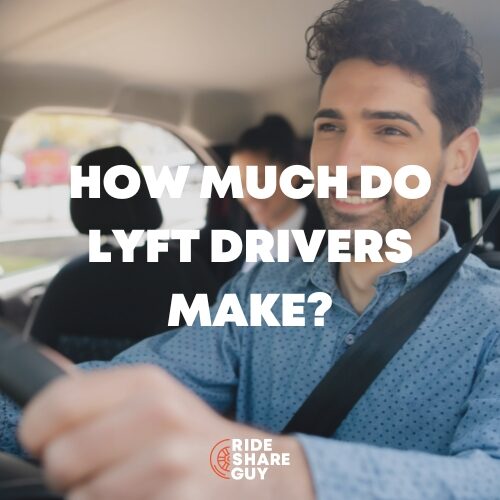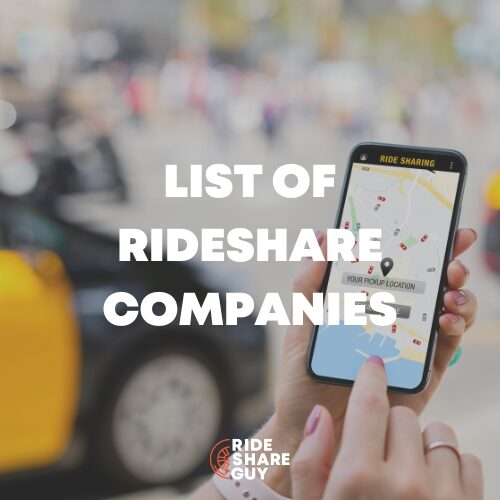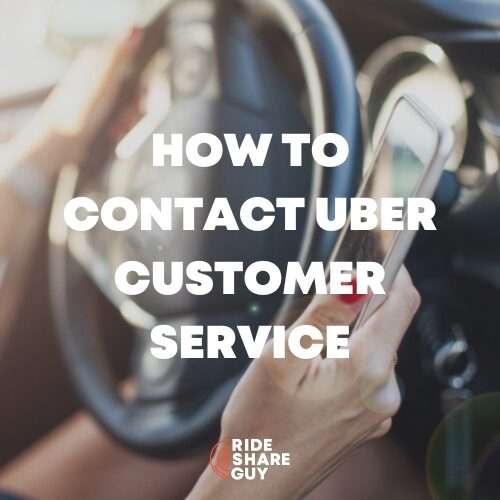Harry here. According to our latest survey, a majority of drivers are dissatisfied with UberPOOL but what exactly makes these rides so unpleasant? Today, senior RSG contributor John Ince takes a look at why he doesn’t like to accept UberPOOL and Lyft Line rides.
I’ve never been a fan of UberPOOL and Lyft Line, but this weekend I let one slip past my watchful eyes and accepted it. Big mistake. It turned into the UberPOOL from hell. When I got home, I decided to put down all the reasons why I hate UberPOOL and Lyft Line. Later, my colleague at the Rideshare Guy, Christian Perea, added to the list with a few more POOL Pain Points. Feel free to let us know about your 3P’s in the comments section below.
If you’re not familiar yet with UberPOOL or Lyft Line, you can read more here, but basically UberPOOL and Lyft Line allow passengers to request a shared ride, which means they’ll share the ride with another passenger or two heading in the same direction. This saves the passengers money because they’re carpooling. For drivers, it’s another story.
1. Many POOL passengers are clueless
Most passengers are oblivious to the big picture. Often newbies request an UberPOOL, not realizing what they’re getting into. When you’ve veered off course to pickup passenger #2 and #3, the previous passengers are surprised and upset. Sometimes they forget (or intentionally) don’t let Uber know they’ve got a friend with them and they can’t all fit in the car. You all know this scene: Um, how did we end up with 5 passengers? Honking cars, and now the app is frozen. Pax #3 wants a charging cable, and oh someone is requesting a music change. Need I say more?
2. More work for less money
Very few POOL passengers realize they’re getting a service at well below market rates, and the driver isn’t compensated at market rates (unless they’re getting the bonus at the end of the week). The rates of pay for POOL and Line are usually cheaper. The pickups, especially in downtown areas, are the most work for you because they’re often messy.
As a driver, you do a lot more work when adding and coordinating pickup and drop-offs between multiple passengers. I have no data on this, but my gut is telling me that if you’re double parked on a downtown street, waiting for passenger #4 while tapping the app and juggling three conversations at once, and Johnny Law over there (or the bus driver with a camera) escaped your notice… well, let’s just say it’s not pleasant for you. That’s why POOL and Line drivers have to stay even more vigilant, yet for less money.
3. Lower ratings
With POOL I often apologize to the passengers as they get in, as I busily tap the app to figure out navigation, “let me get this all straightened out and I’ll soon return to my charming self.” I’m only half kidding. With POOL, it’s difficult if not impossible, to be polite to passengers much less carry on a conversation.
To me, the most compelling reason (beyond income) to be a driver is the passenger interaction – and it’s what leads to high ratings. But it’s very difficult to be present with a passenger with constant shifts in navigation. The whole experience is truncated. The atmosphere inside your car is often tense. The whole experience is nerve-racking for driver and passenger.
By the time it’s over, you’re stressed out. But wait, it’s not over: Uber just added another passenger to your ride. By the end of the night, your ratings have taken a hit.

4. POOL and Line clog the streets with rideshare vehicles
Travis Kalanick is fond of touting UberPOOL as a public good because it reduces traffic congestion. He says it’s more efficient because there are more passengers in the car at any given moment. But does it really reduce traffic congestion? I don’t think so. Why? Where are the new UberPOOL passengers coming from?
POOL is priced so low that Uber is now competing with public transit. These pool passengers used to be sitting on the bus or the subway. Now they’re sitting in cars – in traffic. A study in New York City showed that Uber/Lyft are increasing traffic congestion and pooled rides are a big part of that problem.
See: It’s Settled: Uber Is Making NYC Gridlock Worse. Here’s a passage from the report, published just last month.
These developments are virtually certain to continue, Schaller asserts, fueled not just by the convenience, dependability, and cachet of Uber and other TNC’s, but by their low fares. Traditionally, a ride in a taxicab was four to five times as expensive as a subway or bus ride, which acted as a brake on usage. Now, however, “TNC fare offerings for shared trips during rush hour in Manhattan put TNC fares at less than twice the transit fare, dramatically weakening the disincentive to travel by auto,” Schaller concludes. The resulting “reversal from transit-led to TNC-led growth in travel,” as Schaller characterizes it, “will have profound implications for the city’s transportation network if current trends continue.”
Bottom Line: I don’t think POOL reduces traffic congestion. It increases it because it puts more drivers on the road, which is exactly what we all don’t want. Please note that Uber has its own studies that show the exact opposite, but remember who’s paying for those studies.
5. Sometimes leads to arguments between passengers
I once picked up this guy on an UberPOOL who was virulently anti-tech. Turns out the other passenger and his girlfriend in the back seat worked for Google. It got really nasty really fast, and guess what? Every driver knows the experience. You just got dinged by a passenger for for something you didn’t do. Arguments between passengers, it’s a driver’s fault.
6. It’s dangerous
The constant additions to the app distract the driver’s attention from the road. Ever have this experience? You’re in the right hand lane because that’s where Waze is telling you to go to drop off passenger #1. But wait, suddenly the Uber app adds a second passenger. You glance at the app (again taking your eye off the road). There’s no place to pull over because you’re on city streets.
You quickly figure out that you now need to be in the left hand lane. You have 30 yards to cut across two lanes with a big bus to your left. If you don’t make it you’ll have to take a long detour because the next street is one way the wrong way. Traffic ahead is stopped.
Do you cut across two lanes? It’s a risky maneuver, but you chance it. The three people in the car are all watching you and getting antsy. They’re in a hurry. One is late for an appointment. Tell me that’s not dangerous.
7. Much higher stress
Since you’re going to be under pressure to quickly pickup and drop off more people in a fast manner, you will inevitably be forced to park or wait in strange areas that are prone to accidents and tickets. You know the scene: you’re double parked backing up traffic. The guy in the car behind you is now a honking up a storm. You tell passenger #3 she needs to cancel and request another Uber. She gets mad and starts fighting you tooth and nail over a possible $5 cancelation fee. By now everybody in the car is pissed off. Okay, you relent and bite the bullet by canceling for her, but that counts against your cancelation rate. It’s a lose – lose situation.
Part of the stress results from what my colleague, Christian calls, the algorithmic whip. By that he means, the routing algorithms are constantly being tuned and updated. Sometimes Uber or Lyft will test a bad ‘batch” and you get terrible/inefficient pairings. Christian adds, ever wondered what Chanel No. 5, sweat, cigarette smoke, and the seeping smell of alcohol leaving someone’s pores after a drinking binge smells like when combined?
Despite all this, most drivers still do POOL and Line. Why? Two reasons:
- First, they don’t know about Uber’s new acceptance rate rules (you can ignore 2-3 rides in a row, but you will get put in timeout after that).
- Second, they’re often chasing a bonus and POOL/Line tend to pack more rides in a limited time frame.
Solutions to UberPOOL and Lyft Line
The ideal solution would be for Uber/Lyft to give drivers an option to opt out of giving POOL or Line rides. In fact, it’s such a nice and logical and obvious solution that there’s zero chance it will ever happen. Beyond that, I’m drawing a blank on this one. I’ve asked around and nobody else has any solutions. How about you? Do you have any thoughts on the POOL conundrum for drivers, other than to not accept them?
So what do you think about UberPOOL and Lyft Line? What have your experiences been, positive or negative? How do you think POOL or Line could be improved?
-John @ RSG

